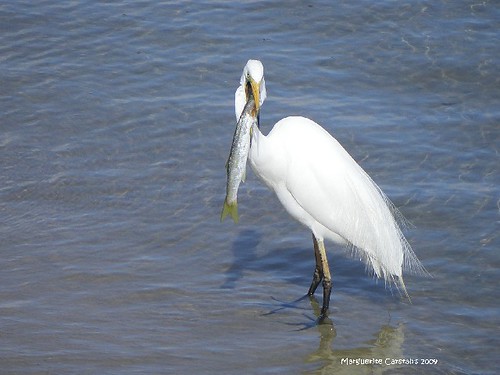He comes regularly to the Boat Ramp where people are fishing on either side. He tries to get their bait, and waits for their fish.
The fisherman gave him a whiting. He took it to the other side and swallowed it whole.
White-faced Heron
Scientific name: Egretta novaehollandiae
Family: Ardeidae
Order: Ciconiiformes
The White-faced Heron is mostly light blue-grey in colour, with a characteristic white face. In flight, the dark flight feathers of the wing contrast with the paler grey plumage, making this bird easily identifiable when viewed from below. It has a long, slim neck and a pointed grey-black bill. The legs are long and dull yellow in colour. Sexes are similar. When breeding, the birds have long feathers (nuptial plumes) on the head, neck and back. The White-faced Heron has a slow bouncing flight. Young White-faced Herons are similar in appearance to the non-breeding adults (no nuptial plumes), but are duller, with little or no white on the face. They often have a reddish colour on the underparts.
White-faced Herons are the most commonly seen herons in Australia. They are found throughout the mainland and Tasmania, and most coastal islands. They also occur in Indonesia, New Guinea, New Caledonia and New Zealand.
Habitat
White-faced Herons can be found anywhere where there is water, from tidal mudflats and coastal reefs to moist grasslands and gardens.
The White-faced Heron feeds on a wide variety of prey, including fish, insects and amphibians. Food is obtained in a variety of ways, such as walking and disturbing prey, searching among damp crevices or simply standing in the water and watching for movement.
Photographs and Art from Places on the Coast of East Australia. Gold Coast, Stradbroke Island, Burrum Heads, Hervey Bay and surrounding coastal areas
Thursday, November 12, 2009
Heron with whiting
Subscribe to:
Post Comments (Atom)

140x45.jpg)




No comments:
Post a Comment